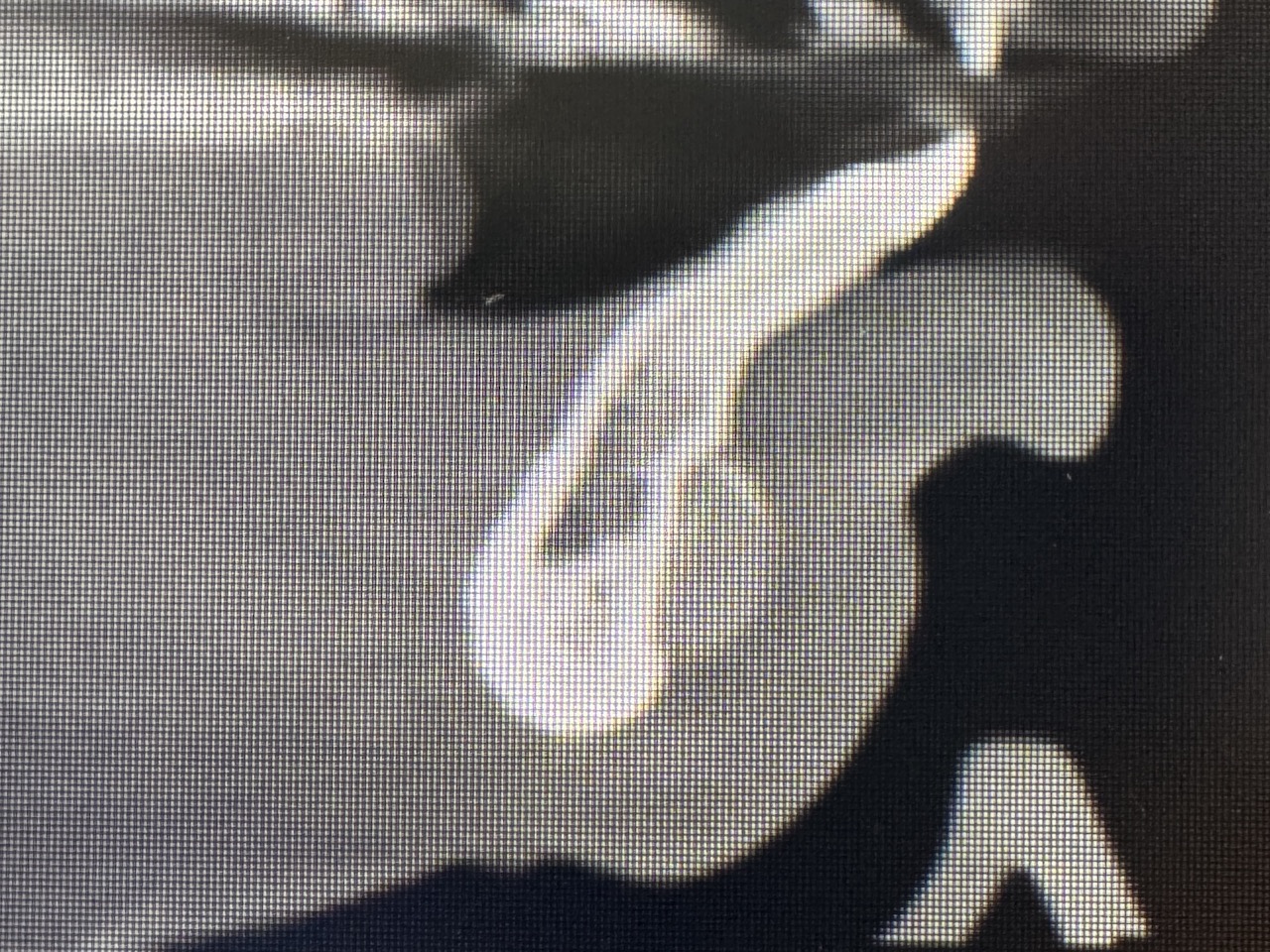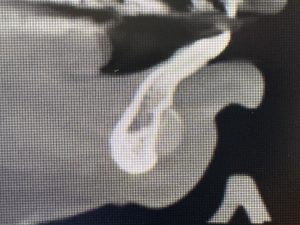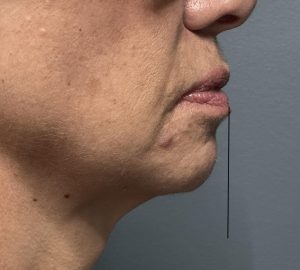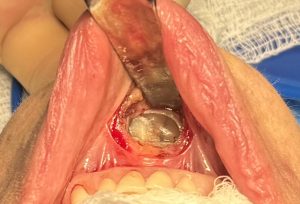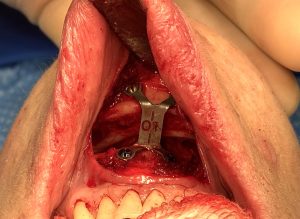Background: Chin implants have the longest history of all aesthetic facial implants and is not rare to occasionally come across a patient with an ‘old’ chin implant from many decades ago. In the vast majority of these cases it will be a silicone implant and it is possible to see various iterations of earlier generation chin implants. In taking out very old chin implants you never know exactly what the implant will look like.
The earliest silicone chin implants were somewhat similar to a breast implant, a very small bag filled with silicone gel. This was the thought process early on which, while it persisted for breast implants, was soon changed a more solid form for silicone facial implants.
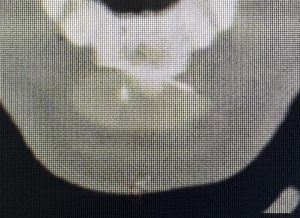
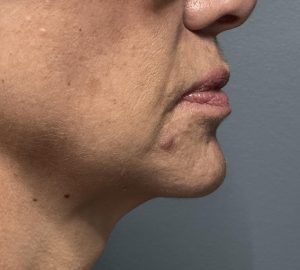
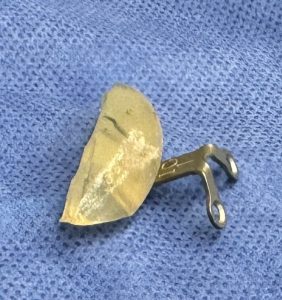
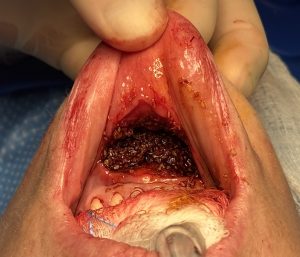
Improving a chin augmentation result always becomes a question of what are the additional dimensional needs that are required and with what approach is best suited to do it. (new implants vs sliding geni0plasty) Imaging of a patient’s pictures is the best way to gauge a patient’s tolerance for change. For horizontal augmentation a line dropped down from the lower lip is a good place to start as it will always develop a reaction as to just right, too much or too little. For most female a chin brought out to this line would be too much. In this case it was not. This than allows a measurement to be made from the soft tissue chin pad out to this line. This number added onto what the implant already had done provides an exact measurement to set the forward position of the new augmentation point.
Highlights:
- nadequate long term chin implant results may necessitate an implant or a bony approach depending on the patient’s aesthetic needs.
- For the female chin who needs significant horizontal advancement, no vertical increase and to keep a narrow chin a sliding genioplasty is the necessary chin implant replacement procedure.
- Preoperative measurements and imaging are needed to determine the forward movement of the sliding genioplasty.
Dr. Barry Eppley
World-Renowned Plastic Surgeon

